Revenue leaders in every industry need to take action now to get ahead of the downturn.
CEOs, CROs, and investors are reaching out to Clari, asking for guidance on how to best navigate macroeconomic uncertainty. According to Bloomberg, some—like Lloyd Blankfein, Goldman Sachs' former CEO and current senior chairman—are even seeing a “very, very high risk” of a recession.
Acting fast to protect revenue doesn’t mean panicking. It does mean shifting from a high-growth mindset to a focus on process, retention, and execution.
Companies with an established revenue process should take concrete steps now to prepare for any eventuality, from market dips to supply chain disruption to another pandemic Black Swan-type event.
For CEOs and CROs, the goal of these actions is to formulate a thesis that will drive how you run the business and present a plan to the board.
Form a thesis: What will happen to your revenue this quarter, next quarter, and the rest of the year?
A CEO needs data across multiple revenue dimensions to frame how the broader economy might impact your operating plan. Leaders need to be intellectually honest, ask tough questions about each segment, region, and industry, and assess where they’re most likely to experience headwinds. Staff need to plan for contingencies, prep their playbooks, and assess their books of business—now.
Operationalize gathering the signals and data needed to maximize revenue by focusing on customer retention, cadences and process reviews, and pressure testing big deals.
Here’s how Clari helps.
1. One word: Customers
Customer outreach and communication are key. But don’t assume everyone is suffering, says Clari’s Conor Nolen, SVP of Customers for Life at Clari. Approach customers with open-minded curiosity.
For software-as-a-service (SaaS) customers, pay attention to shorter, 12 month renewals, Nolen says, or any due in the next year. Start outreach and gauging engagement immediately. Customers may also be looking for licensing gaps; unused licenses that are left idle in a bull market or a bear market may be a prime target for cost-saving measures. If engagement has fallen off in an account, for example, that signals potential churn that needs to be addressed with a re-engagement play now.
It’s equally vital to track outside trends. The customer success team should note any business risk they hear from customers, such as potential fallout from supply chain issues specific to a given geography, or a professional education platform suffering cutbacks as the first non-essential benefit on a company’s cutting block.
Create special fields to track such issues. For example, create a field with potential high/low-risk impacts along a scale of four, and tag each account according to risk. By doing so, a CRO or SVP can quickly see which deals, and how many, are potentially impacted by larger macroeconomic challenges. This is in addition to Clari tools that allow for easy inspection of in-quarter deals, their close date, and negotiation status.
In Clari’s Revenue Platform:
Evaluate Renewal Health. Dive into your upcoming renewals to understand which deals are at risk and why. Work with account teams and execs to create strategies that will restore health in key accounts.
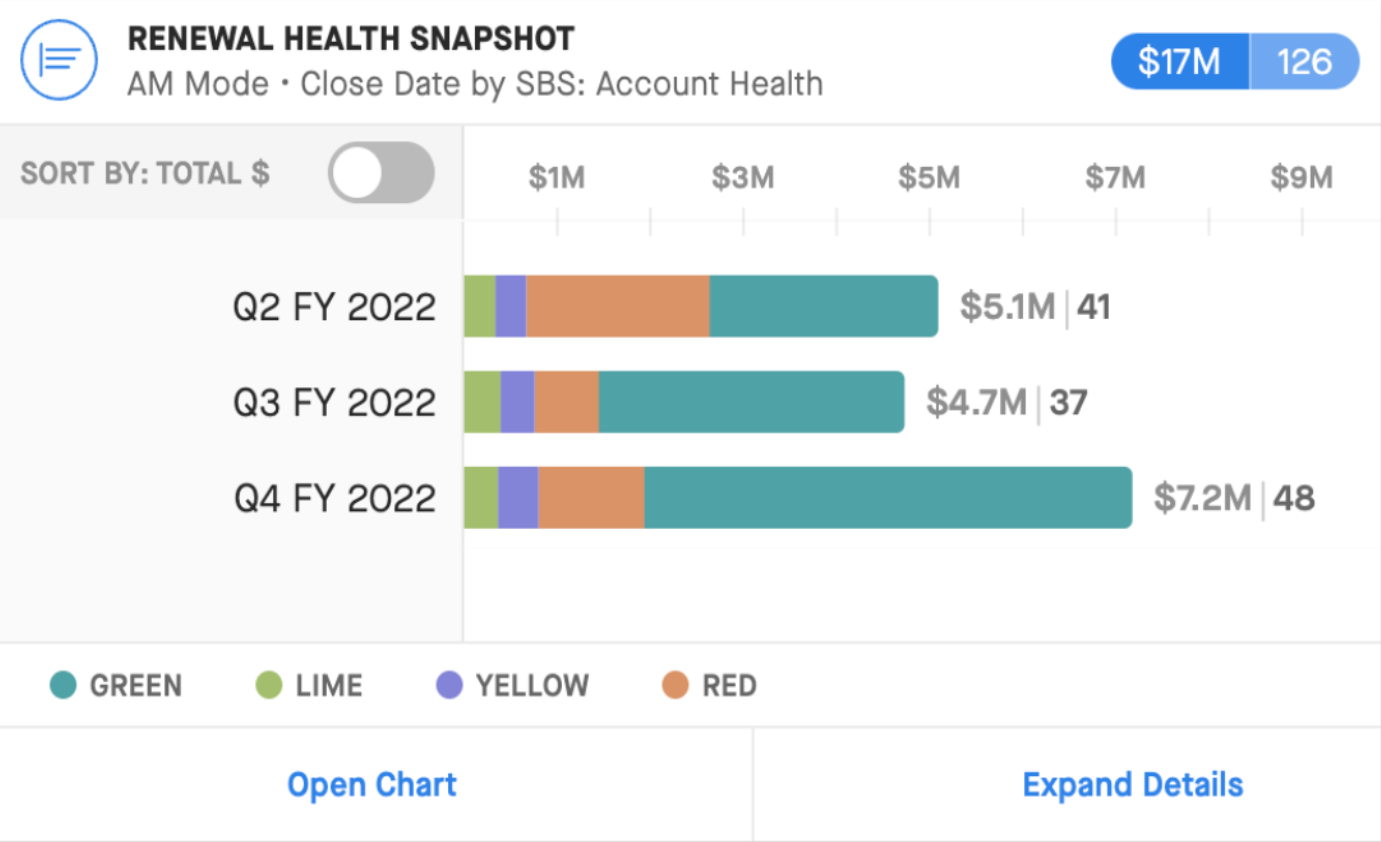
Inspect Deal Health Indicators. Keep your finger on the pulse of deal health trends and reasons for change. Create a weekly cadence with account teams to proactively address downward trends.
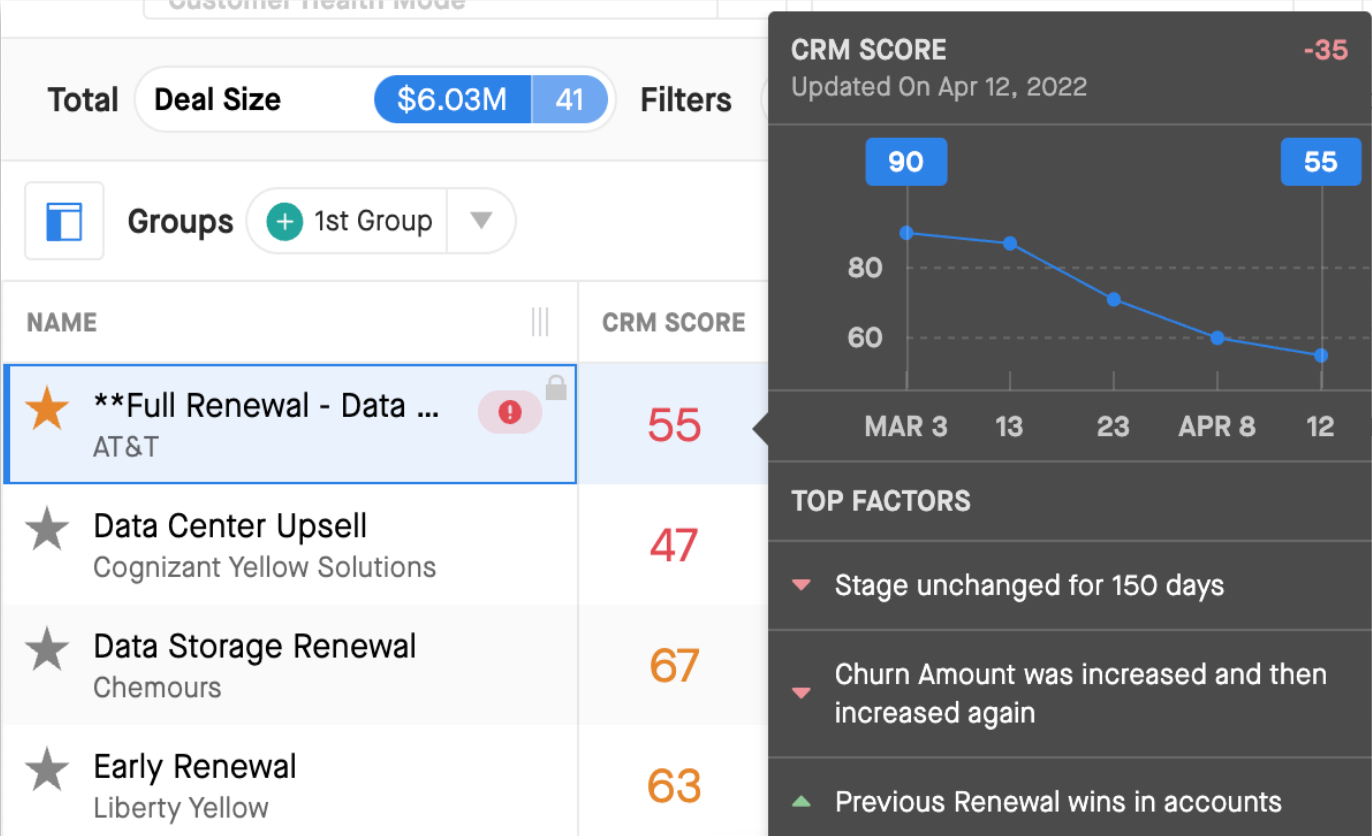
Assess Customer Engagement. Compare deal health scores against customer engagement and deal size to spotlight key deals that may require executive support.
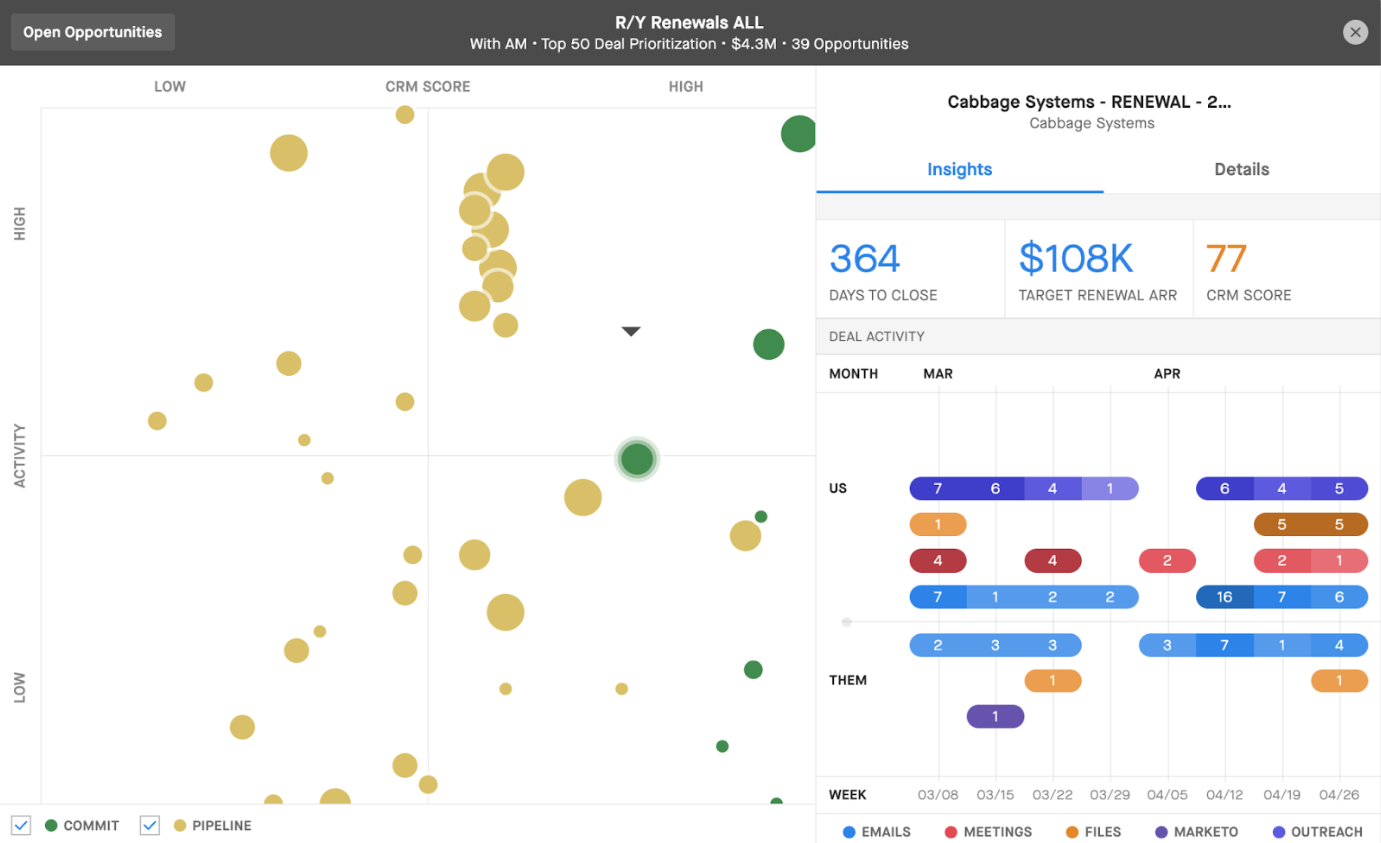
Monitor Key Relationships. Assess key stakeholder engagement across your deals. Rally your executive team to send personal notes to their peers to strengthen relationships.
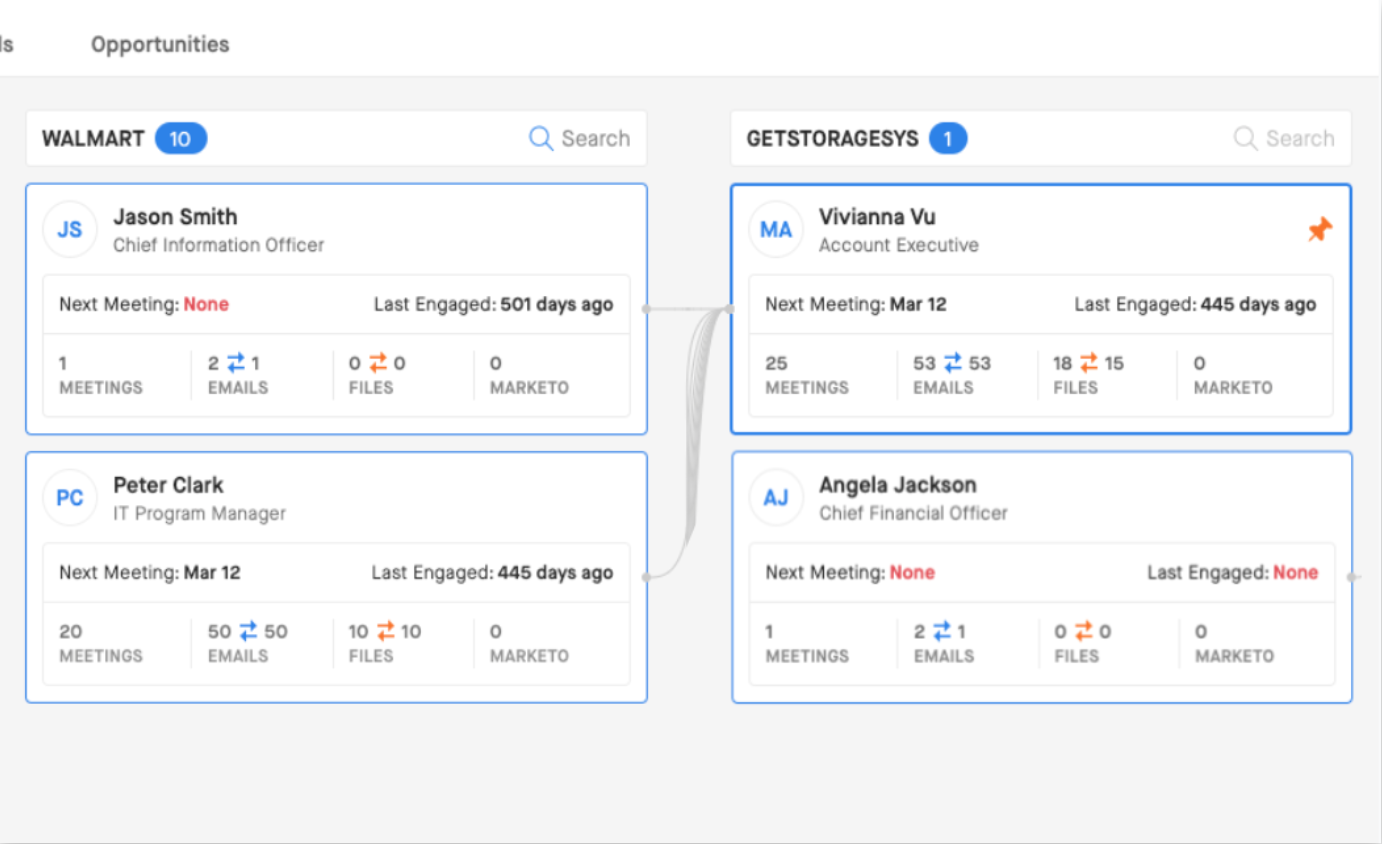
Inspect in-quarter deals by close date and negotiation status.
Create a separate field in Clari to flag any potential high/low impact on deals.
2. Calibrate 3 C’s: Coverage, Capacity, Conversion
Now is the time to tighten pipeline reviews and cadences, and start assessing your current revenue models and creating new ones, if necessary, says Josh VanGeest, Clari’s vice president of revenue operations. For example, if you don’t already have weekly cadences to review pipeline, establish that now, so if anything starts to slip, you see it immediately, he says.
Make sure you have an equally clear view of rep capacity and pipeline shifts. In a recession, you may need more pipeline to generate the same revenue as previous quarters. You’ll need to know if your reps can handle that increase or if the forecast is at risk. Creating finance models that run best and worst-case scenarios helps prepare the revenue organization, so everyone knows what plays to run immediately with macroeconomic shifts.
In Clari’s Revenue Platform:
Capture Deal Movement Signal. Track how many of your close dates are pushing from one quarter to the next. Spot trends in segments, industries, or regions, and make focus area recommendations to sales leaders.
Drill into the Details. Go beyond what’s happening and truly understand why. Drill down to the deal level for inspection to help you explain the trends and create prescriptive game plans.
3. Pressure Test Big Deals
Pressure test deals by reviewing risk and account engagement, with more time and detail than you might during fast-paced growth, says Anthony Cessario, Clari’s vice president of market expansion. Prepare to bring your prospect’s CFO into deals. In downturns, they'll likely need to be more involved in any financial decision making.
Push your sequence of events (SOE) earlier. Pressure test deals to get a sense of commitments well before the end of a quarter. A sequence of events clearly shows upcoming and forward-facing next steps, offering high visibility into the way ahead toward closed-won. With a mutual action plan created in Clari Align, your SOEs become a formalized process that inspires mutual investment from buyer and seller to get the job done and shorten time-to-value.
In Clari’s Revenue Platform:
Review Slipped Deals. Review slipped deals and evaluate the reasons for their movement every week. Understand what’s addressable, what’s not, and create appropriate game plans.
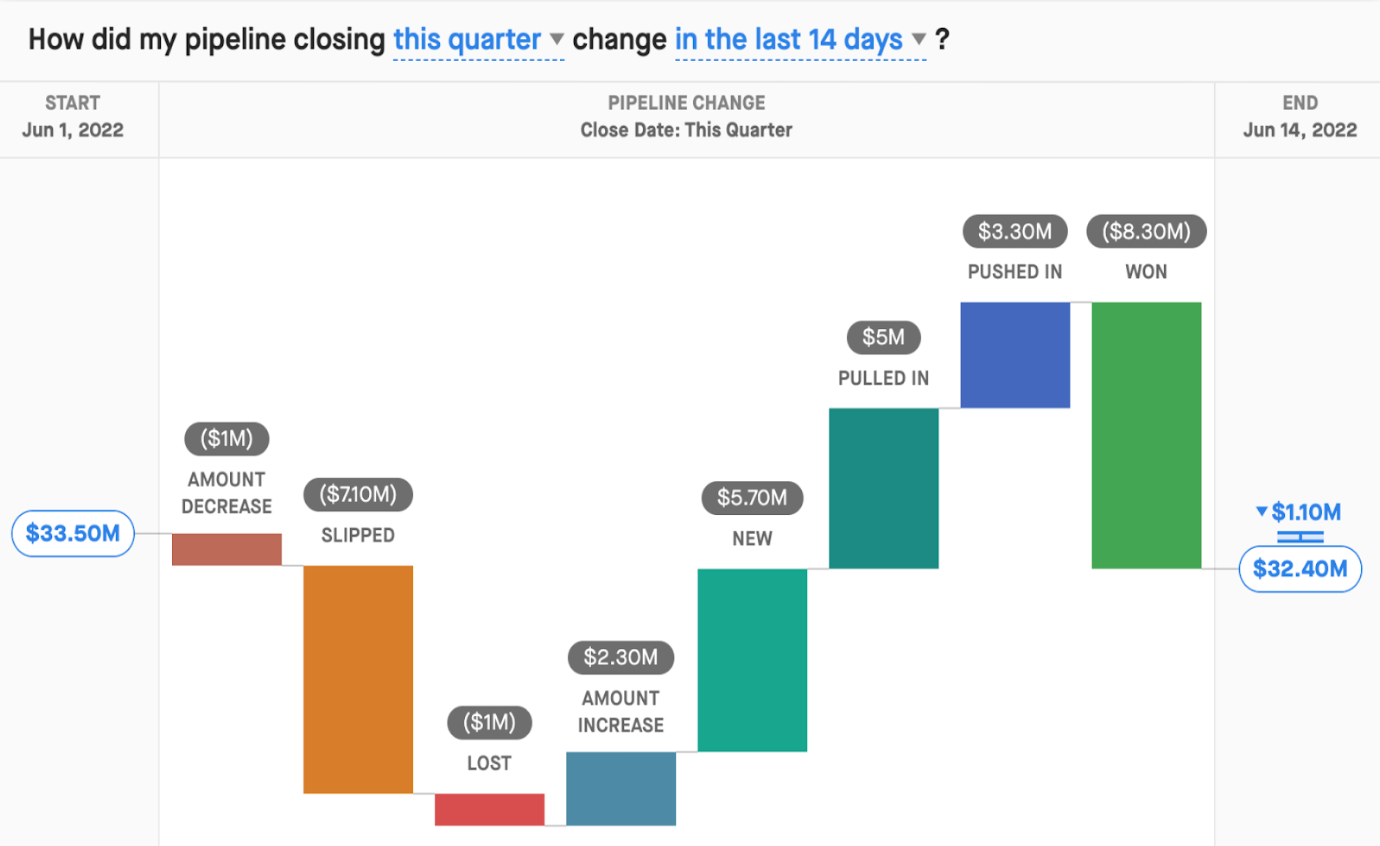
Monitor Key Relationships. Assess levels of engagement of key stakeholders across your deals. Rally your executive team to send personal notes to their peers to strengthen relationships.
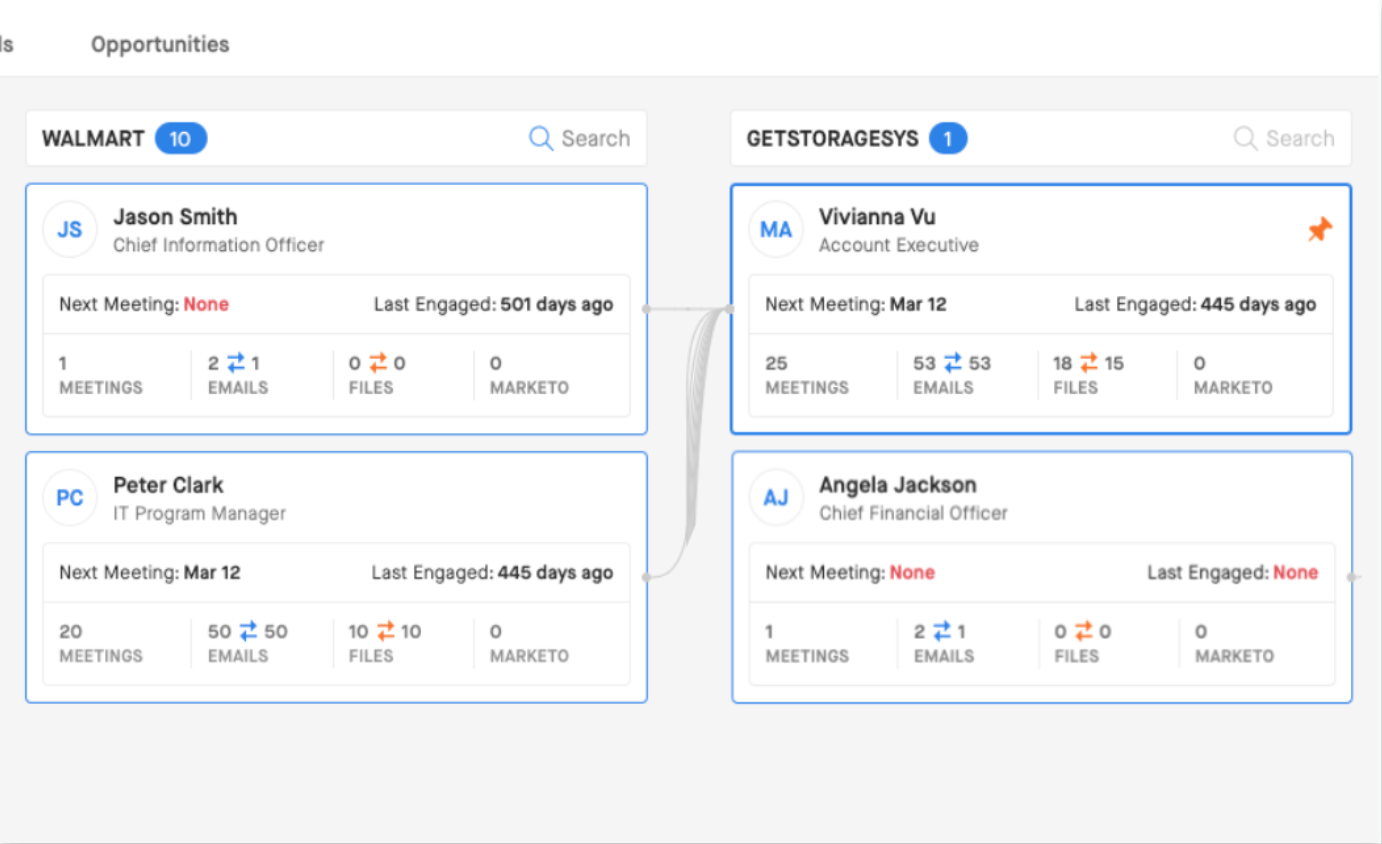
Drill into the Details. Go beyond what’s happening and truly understand why. Drill down to the deal level for inspection to help you explain trends and create prescriptive game plans.
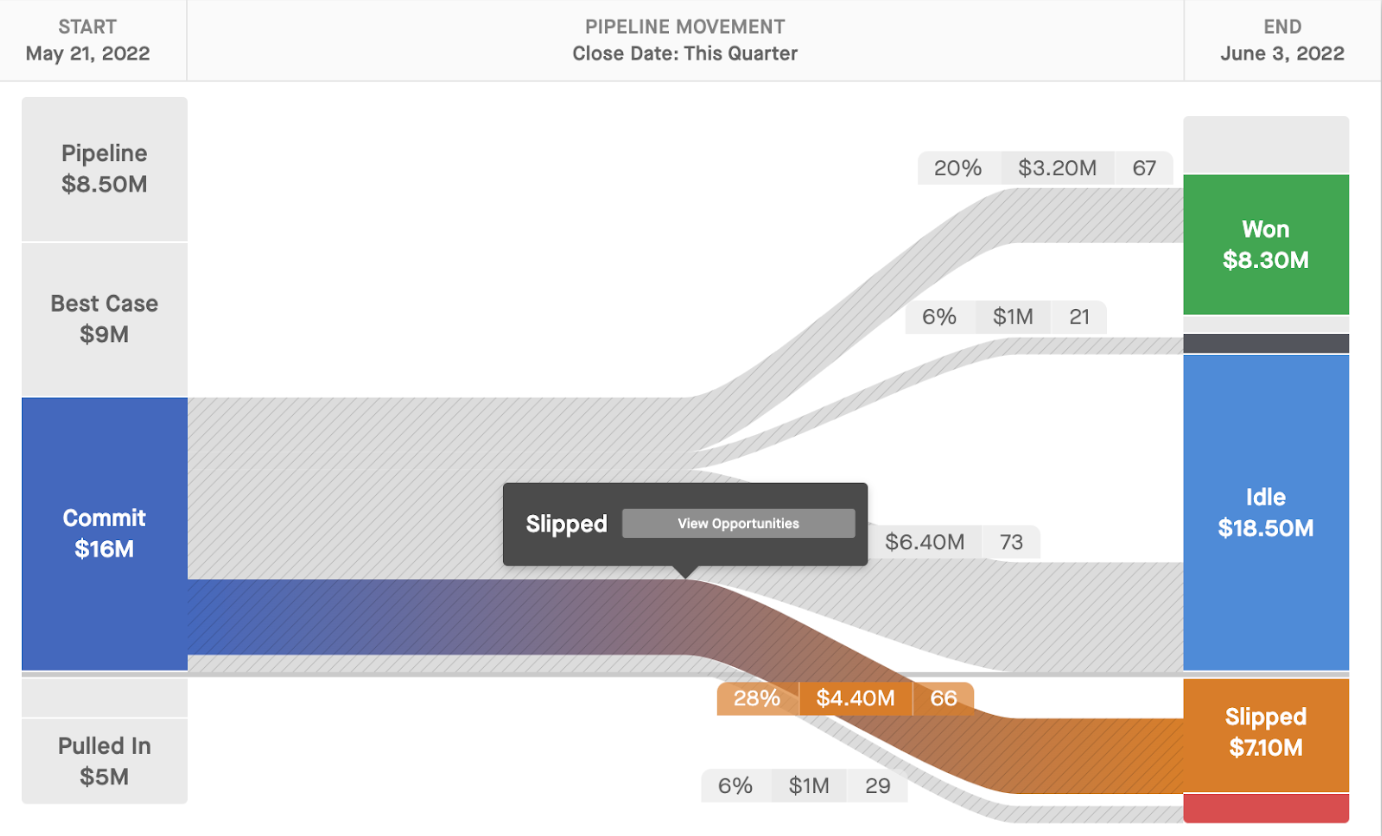
Align on Mutual Action Plans. MAPs align expectations and keep the sequence of events visible. The result is not simply a closed-won deal. It’s also time-to-ROI for both buyer and seller.
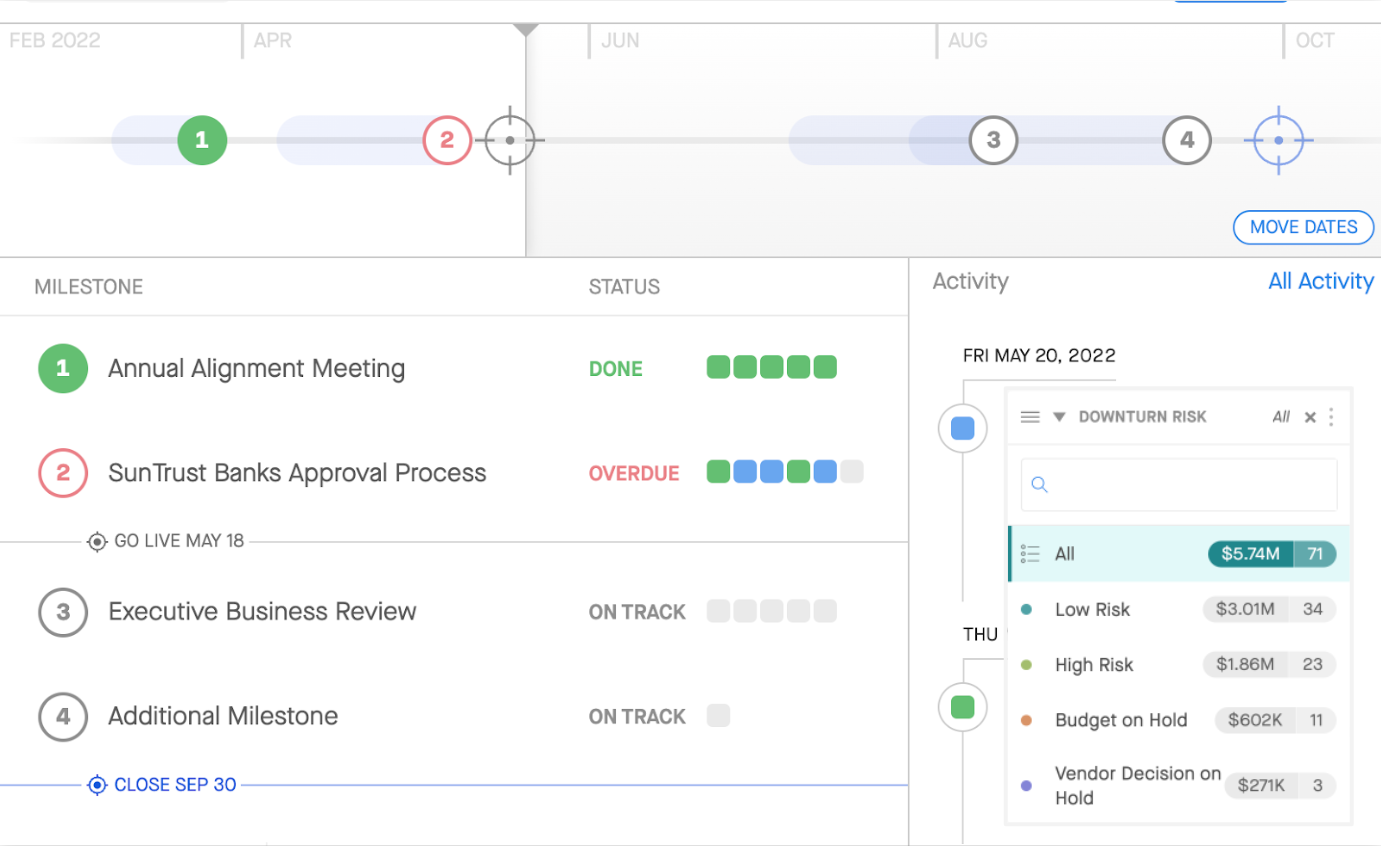
4. Known unknowns
Fast pivots aren’t easy. You’ll need to prep your staff, plan for more hours, and be prepared to examine every aspect of your go-to-market strategy. But taking rapid action during times of uncertainty separates the companies that become legendary from those that become cautionary tales. Help your team by sharing the context about why all of these actions matter now, and how they help the entire go-to-market team be more successful. Make sure you agree on the required revenue insights you need to make fast decisions. And keep an eye on unofficial bellwethers. Maybe it’s a sales rep who is a closing machine, but suddenly can’t win a deal. If they’re struggling, that could indicate it’s time to take a deeper look at potential obstacles for the whole team.
Review Conversion Rate Trends. Analyze past quarter conversion rates for pipeline stages. Apply those conversion rates against your open pipeline for current and future quarters to predict likely revenue outcomes.
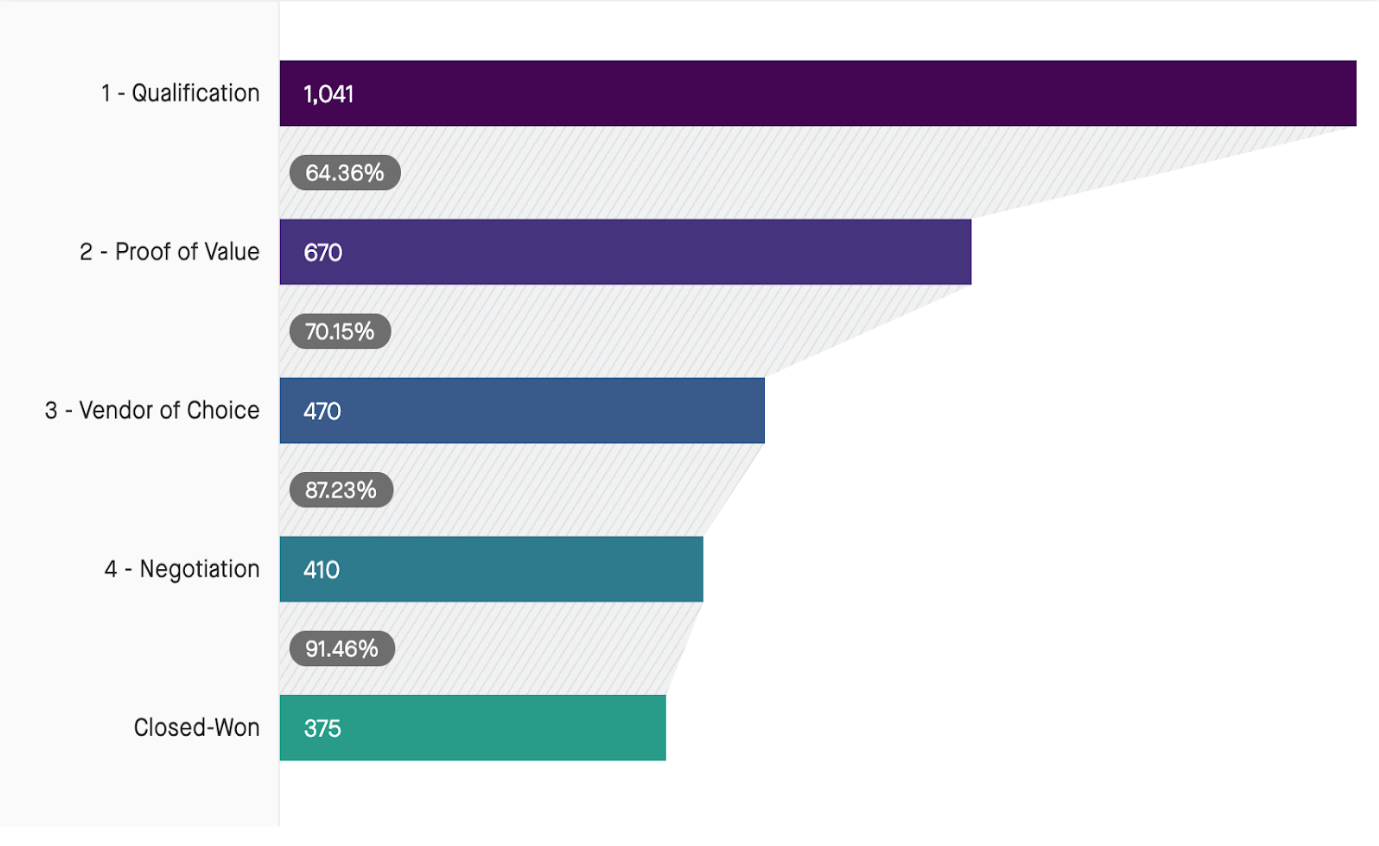
Capture Deal Movement Signal. Track how many of your close dates are pushing from one quarter to the next. Spot trends in segments, industries, or regions, and make focus area recommendations to sales leaders.




